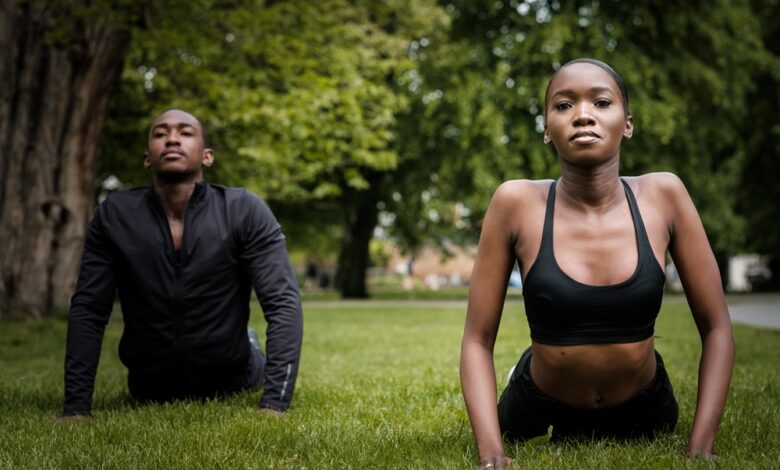Workout smarter not harder: Age-based tips for fitness

Table of Contents
Fitness is not just about sweating it out; it’s about understanding your body’s needs at different stages of life. Whether you’re a pre-teen with boundless energy, a teenager navigating growth spurts, a young adult juggling work and social life, or a senior focusing on mobility and health, we’ve got you covered.
In this guide, we’ll explore age-specific tips and tricks to help you optimize your workouts and achieve your fitness goals without burning out or risking injury. From fun activities for kids to low-impact exercises for seniors, we’ll provide practical advice to make fitness an enjoyable and sustainable part of your life.
So let’s embark on this journey together, learning how to work smarter, not harder, towards a healthier and happier you!
1. Workout & Exercises For Kids (Ages 6-12)
Keep it fun!
Kids at this age are bundles of energy, and the best way to channel that energy is through fun and engaging activities.
– Play active games
Encourage your kids to play games like tag, hide and seek, or jump rope. These games are not only enjoyable but also provide excellent workouts. Tag gets their heart pumping, hide and seek involves lots of running, and jump rope builds endurance and coordination.
People Also Read : 5 Advantages & Disadvantages Of Personal Health Record APP (PHR)
– Try sports
Signing your kids up for sports teams like soccer, basketball, or swimming is a fantastic way for them to stay active while having fun with friends. Being part of a team not only encourages physical activity but also teaches valuable teamwork and sportsmanship skills.
Limit screen time
In today’s digital age, it’s easy for kids to get lost in screens, but it’s essential to encourage a healthy balance between screen time and other activities.
– Less TV, more play: Encourage your kids to spend less time in front of screens and more time playing outside. Whether it’s riding bikes, playing in the park, or exploring nature, outdoor play is not just good for their bodies but also for their minds. It encourages creativity, imagination, and social interaction.
Eat healthy snacks
Nutrition plays a crucial role in a child’s growth and development, so it’s essential to provide them with healthy snacks that fuel their active lifestyles.
– Fruits and veggies: Instead of reaching for chips or candy, encourage your kids to snack on fruits like apples, bananas, or carrots. Not only are these snacks delicious, but they also provide essential vitamins, minerals, and fiber. They give your kids the energy they need to play and keep them feeling full longer, reducing the temptation to reach for unhealthy snacks.
By keeping activities fun, limiting screen time, and providing healthy snacks, you’ll set your kids on the path to a lifetime of healthy habits and active living.
2. Workout & Exercises For Teens (Ages 13-19)
Mix it up
During the teenage years, bodies are growing and changing rapidly, so it’s essential to keep workout varied and exciting to keep teens engaged and motivated.
– Variety is key
Encourage teens to try different workouts like running, cycling, or dancing. Mixing up their exercise routine not only keeps things interesting but also works different muscle groups. Running boosts cardiovascular health, cycling strengthens leg muscles, and dancing improves flexibility and coordination.
– Strength training
Incorporating bodyweight exercises like push-ups, squats, and lunges into their routine helps teens build strength and endurance. These exercises can be done anywhere, without the need for expensive equipment, making them perfect for teens looking to tone up or build muscle.
Stay hydrated
With busy schedules and active lifestyles, it’s easy for teens to forget to drink enough water, but proper hydration is essential for their overall health and performance.
– Drink water: Encourage teens to carry a water bottle with them and sip throughout the day, especially during workouts. Hydration is crucial for maintaining energy levels, regulating body temperature, and aiding in muscle recovery. Dehydration can lead to fatigue, cramps, and poor performance, so it’s essential to remind teens to drink plenty of water throughout the day.
Get enough sleep
Teenagers often juggle school, extracurricular activities, and social lives, but it’s crucial not to overlook the importance of quality sleep.
– Quality sleep
Aim for 8-10 hours of sleep each night. During sleep, the body repairs muscles, consolidates memories, and releases growth hormones. Getting enough sleep not only helps teens feel refreshed and alert but also supports healthy growth and development. Encourage them to establish a bedtime routine and create a sleep-friendly environment by keeping their bedroom dark, quiet, and comfortable.
By incorporating a variety of workout, staying hydrated, and getting enough sleep, teens can maintain their physical and mental well-being during these crucial years of growth and development.
3. Workout & Exercises For Young Adults (Ages 20-40)
Set realistic goals
As young adults juggle careers, relationships, and other responsibilities, it’s crucial to approach fitness with a balanced and realistic mindset.
– Start small:
Setting achievable goals is key to maintaining motivation and preventing burnout. Whether it’s aiming to run a certain distance, lift a particular weight, or simply exercise a certain number of times per week, starting small allows you to build momentum and gradually increase intensity over time.
– Consistency is key:
Even with a busy schedule, strive to stick to a regular workout routine. Even if it’s just 30 minutes a day, staying consistent helps make exercise a habit. Find a time that works best for you, whether it’s in the morning before work or in the evening after dinner, and make it a priority to move your body regularly.
Focus on form
With the hustle and bustle of daily life, it’s easy to rush through workouts, but focusing on proper technique is essential for preventing injuries and maximizing results.
– Proper technique
Take the time to learn the correct form for exercises, whether it’s squats, deadlifts, or overhead presses. Quality over quantity is crucial, so start with lighter weights and gradually increase as you master the movements. If you’re unsure about proper form, consider working with a personal trainer who can provide guidance and feedback.
Listen to your body
As young adults push themselves to achieve their fitness goals, it’s essential to pay attention to how their bodies respond and prioritize rest and recovery when needed.
– Rest when needed
Don’t push through pain or fatigue. If you’re feeling excessively sore or tired, take a rest day or engage in low-intensity activities like walking or yoga. Rest days allow your muscles to repair and grow stronger, reducing the risk of injury and preventing burnout.
By setting realistic goals, focusing on form, and listening to their bodies, young adults can maintain a healthy and sustainable approach to fitness as they navigate the demands of adulthood. Remember, it’s not about how hard you work, but how smart you work towards your fitness goals.
4. Workout & Exercises For Seniors (Ages 40 and above)
Low-impact exercises
As we age, it’s important to prioritize exercises that are gentle on the joints while still providing an effective workout.
– Gentle on joints
Opt for activities like walking, swimming, or yoga. These low-impact exercises help maintain cardiovascular health, improve flexibility, and strengthen muscles without putting too much stress on the joints. Walking is an excellent way to stay active and can be easily incorporated into daily routines. Swimming provides a full-body workout while being easy on the joints, and yoga improves flexibility, balance, and strength.
– Balance exercises
Include exercises that focus on improving balance, such as standing on one leg, heel-to-toe walking, or Tai Chi. These exercises help prevent falls and injuries by improving stability and coordination. Balance training becomes increasingly important as we age to maintain independence and reduce the risk of falls.
Warm up and cool down
Before and after any workout, it’s crucial for seniors to properly prepare their bodies and allow for adequate recovery.
– Prep and recover
Always start with a gentle warm-up before exercising to increase blood flow to the muscles and prepare them for activity. This can include light walking, marching in place, or gentle stretching. After exercising, take time to cool down with stretching exercises to help reduce muscle soreness and promote flexibility. Cooling down also allows the heart rate to return to its resting state gradually.
Consult a professional
For seniors, it’s essential to approach exercise with caution and seek guidance from healthcare professionals when necessary.
– Expert advice
Before starting any new exercise regimen, especially if you have health concerns or pre-existing conditions, consult a fitness trainer or doctor. They can provide personalized recommendations based on your individual needs and help you design a safe and effective exercise program. Whether it’s managing chronic conditions like arthritis or recovering from an injury, seeking professional guidance ensures that you exercise safely and effectively.
By incorporating low-impact exercises, prioritizing warm-ups and cool-downs, and seeking expert advice, seniors can enjoy the benefits of regular physical activity while reducing the risk of injury and maintaining overall health and well-being. Remember, it’s never too late to start exercising and reap the rewards of a healthy and active lifestyle.
For More Tips Like ThiS Download PHR App
.Facebook | Instagram | Linkedln| Youtube | Get Direction To Our Office



